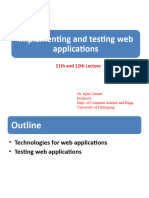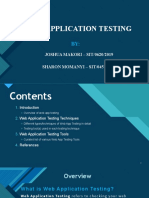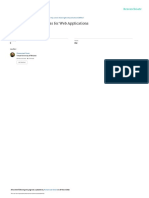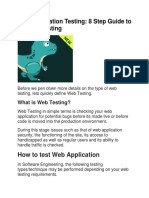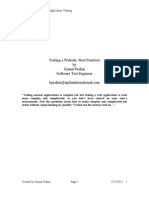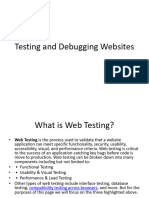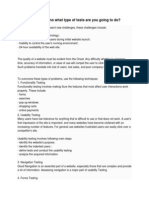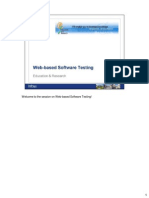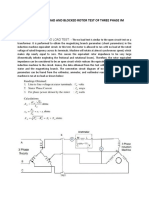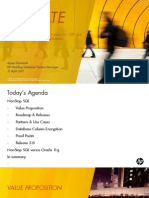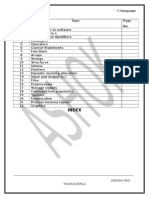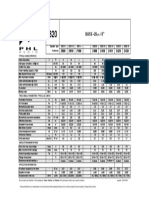0% found this document useful (0 votes)
16 views36 pagesLecture 8 Testing Web Applications
The document outlines the importance of testing web applications, emphasizing the urgency of delivering high-quality products amidst competitive pressures. It details the various types of testing, including content, interface, navigation, component, configuration, performance, and security testing, along with their objectives and methodologies. The document also highlights the unique challenges of web application testing due to diverse environments and configurations, and stresses the need for a comprehensive testing strategy to ensure functionality and user satisfaction.
Uploaded by
ummahhh20Copyright
© © All Rights Reserved
We take content rights seriously. If you suspect this is your content, claim it here.
Available Formats
Download as PDF, TXT or read online on Scribd
0% found this document useful (0 votes)
16 views36 pagesLecture 8 Testing Web Applications
The document outlines the importance of testing web applications, emphasizing the urgency of delivering high-quality products amidst competitive pressures. It details the various types of testing, including content, interface, navigation, component, configuration, performance, and security testing, along with their objectives and methodologies. The document also highlights the unique challenges of web application testing due to diverse environments and configurations, and stresses the need for a comprehensive testing strategy to ensure functionality and user satisfaction.
Uploaded by
ummahhh20Copyright
© © All Rights Reserved
We take content rights seriously. If you suspect this is your content, claim it here.
Available Formats
Download as PDF, TXT or read online on Scribd
/ 36








